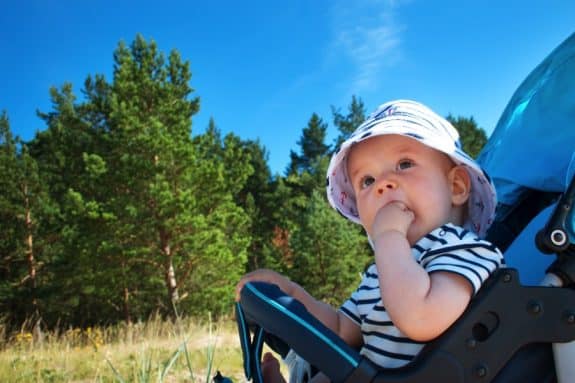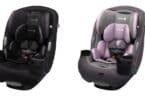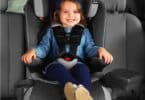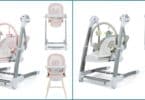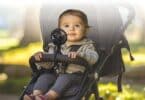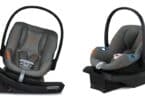The temperature is expected to be over 100 degrees today and much of North America is seeing a heat wave. As families continue their Summer adventures it’s important for parents of babies and young children to take into account that these little ones face unique, weather-related challenges.
According to the U.S. Department of Health and Human Services, children can become overheated up to five times faster than adults. This is because they don’t have as many sweat glands and their body-to-surface ratio is different, making it harder to regulate internal temperatures.
“Because children’s reserves are smaller, it’s easier for them to become dehydrated,” says Dr. Dennis Woo, a pediatrician at UCLA Medical Center, Santa Monica. “Add to that the fact that many first-time parents have a tendency to “overdress” their kids in clothing that contributes to overheating. And, of course, very young children can’t tell us when they’re too hot, so it’s important for parents to recognize the early signs of a heat-related problem.”
According to Woo, early indicators of possible overheating include irritability, feeling hot to the touch and sweating. More serious symptoms requiring immediate medical attention are a temperature above 102 degrees Fahrenheit or nausea and vomiting.
He offers the following tips for protecting babies and young children from the heat.
- Avoid going outside, if possible, between 10 a.m. and 4 p.m., when temperatures are highest and the sun’s rays the strongest.
- Be aware that high temperatures are not the lone risk factor. Even if thermometers register below triple digits, if the humidity level is high, it can prevent your body’s internal cooling mechanism – sweating – from working effectively. Because children are smaller, they likely will be more affected by humidity – and overheat – sooner than adults.
- Keep children well hydrated. Remember, they may not tell you they’re thirsty or want to drink, but offer plenty of fluids. Water is best for children six months or older.
- Babies younger than six months should be fed more frequently. If you are breastfeeding, be sure to drink plenty of water, too. Signs of overheating in newborns include damp head or neck, indicating they are sweaty, redder-than-usual faces, rash, rapid breathing or hot chest.
- Dress children appropriately – loose-fitting, one layered, light-colored clothing is best, ideally in breathable fabrics like cotton.
- Keep kids in climate-controlled areas. If your home lacks air-conditioning, consider going to public places with AC, including movie theatres, malls or even museums. In addition, there are nearly 100 “cooling centers” located throughout Los Angeles County.
- For homes without air conditioning, consider using room fans to increase air circulation and give lukewarm baths or “sponge baths” twice daily. Be sure the fan is located in a place where children cannot reach it or trip over the cord.
- Children’s appetites will likely be decreased by the heat. Don’t worry if they are eating less as long as their fluid intake remains good.
- Try to limit children’s physical activity. Consider reading books to them, playing quiet games, or watching TV together.
Although the following tips don’t apply just to times of heatwaves or heat domes, any discussion of heat-related safety would be remiss without them. - NEVER, EVER leave a child (or pet) alone in a vehicle – not even for a moment. Children have died from heatstroke in cars in temperatures as low as 60 degrees – and cracking windows does NOT help slow the heating process or decrease the maximum temperature.
- Even with the windows cracked, the temperature inside cars can reach 125 degrees in minutes, with 80 percent of the increase occurring in the first 10 minutes.
- If your children will be outside, be sure they wear wide-brimmed hats and sunscreen with a minimum SPF of 20-30. For babies less than six months old, be sure the sun barrier is zinc oxide rather than a chemical sunscreen. And remember to reapply frequently. Apply sunscreen under clothing too.
This week a Swedish study resurfaced warning parents about placing a blanket over the front of the stroller to shade their babies on sunny days. Swedish Pediatrician Svante Norgren warns that even the thinnest of covers can reduce the air circulation and raise the temperature inside the stroller to dangerous levels.

